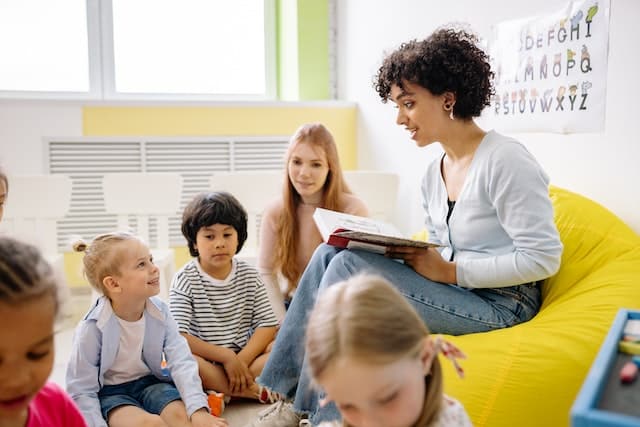In the ever-evolving post-pandemic era, as a dedicated educator, you deeply understand the significance of prioritizing effective classroom instruction strategies that elevate student engagement and enrich learning outcomes. The traditional “stand and deliver” approach no longer suffices to cater to the diverse needs of today’s learners. Instead, it is crucial for you to harness the power of data-driven approaches and innovative instructional methods, enabling you to create vibrant and interactive learning environments. Throughout this blog post, we will embark on a journey together, exploring a myriad of proven strategies that will empower you to optimize student engagement and foster meaningful and transformative learning experiences.
Engaging Learning Environment
Creating an engaging and enriching learning environment is at the core of effective classroom instruction. As a dedicated teacher, you know the value of captivating your students’ attention and fostering their love for learning. By incorporating active learning into your lessons, you encourage your students to be active participants in their own learning journey. Group discussions, debates, hands-on experiments, and interactive projects are all activities that require their active involvement. By engaging students in these activities, you not only deepen their understanding but also promote critical thinking, problem-solving, and collaboration skills.
Power of Technology
In today’s digital age, technology plays a vital role in education. As an educator, you can utilize the power of technology to enhance your instruction and engage students in new and exciting ways. Integrating educational apps, interactive multimedia resources, and online collaboration tools into your lessons provides opportunities for personalized learning, real-world connections, and instant feedback. This makes your lessons more interactive and relevant for students, capturing their interest and boosting engagement.
Differentiated Instruction
Recognizing and accommodating the diverse needs of your students is crucial for effective instruction. Differentiated instruction strategies allow you to tailor your lessons to meet individual learning styles, preferences, and skill levels. Incorporate a variety of instructional materials, allow for flexible grouping, and provide options for demonstrating understanding. By differentiating instruction, you ensure that every learner has an opportunity to succeed and excel in their learning journey.
Positive Classroom Culture
Creating a positive classroom culture is essential for fostering student engagement and a love for learning. Cultivate a supportive and inclusive environment where every student feels safe, respected, and valued. Establish clear expectations for behavior and create opportunities for students to contribute to the class community. Celebrate individual strengths and achievements, promote kindness and empathy, and foster positive relationships among students. When students feel a sense of belonging and connection, their engagement and motivation soar.
Real-World Application
Make learning relevant and meaningful by connecting classroom content to real-world applications. Help students see the practical applications of what they are learning by sharing real-life examples, inviting guest speakers, or organizing field trips. By highlighting the relevance of their studies, you can ignite curiosity and motivate students to explore and understand the world around them.
Assessments and Feedback
Regularly assess student understanding through formative assessments to guide instruction and provide timely feedback. Use a variety of assessment tools, such as quizzes, exit tickets, class discussions, and project-based assessments. Formative assessment allows you to identify gaps in understanding, adjust instruction accordingly, and support students’ learning needs effectively.

Data-driven instruction allows you to track student progress, measure learning outcomes, and make informed instructional decisions. By using data to identify students who may be struggling or excelling, you can provide timely interventions or enrichment opportunities. This targeted approach ensures that instructional strategies align with student abilities, maximizing engagement and learning outcomes.
Formative Assessment
Formative assessment plays a vital role in data-driven instruction. It provides ongoing feedback on student understanding and allows you to adjust your instruction in real-time. Formative assessments can take various forms, such as quizzes, exit tickets, class discussions, and project-based assessments. By regularly assessing student understanding, you can identify gaps in knowledge and adjust your teaching strategies accordingly. This allows you to provide targeted support to students who need it and challenge those who are ready for more advanced concepts.
Summative Assessment
In addition to formative assessment, leveraging summative assessment data can provide valuable insights into overall student performance. Summative assessments, such as end-of-unit tests or standardized exams, give you a broader view of student learning outcomes. By analyzing summative assessment data, you can identify patterns, trends, and areas of improvement for future instruction.

Empower your students by granting them a voice in their own learning journey. Create ample opportunities for them to exercise choice in selecting topics, projects, and learning methods. Encourage them to contribute their ideas, ask thoughtful questions, and take ownership of their educational path. When students feel a sense of agency and control over their learning, they become more invested, engaged, and motivated to excel. By valuing their input and honoring their perspectives, you foster a sense of ownership and commitment that fuels their growth and academic success.
COLLABORATION WITH OTHER TEACHERS
Collaboration among educators is essential for maximizing the potential of data-driven instruction. By sharing best practices, discussing data analysis techniques, and engaging in professional learning communities, teachers can collectively improve their instructional practices. Collaborative data analysis allows educators to gain different perspectives, identify trends across classrooms, and implement evidence-based strategies. Working together, teachers can support one another in leveraging data to drive instruction and improve student outcomes.
STUDENT COLLABORATION
Another important aspect of effective classroom instruction is fostering collaboration and teamwork among students. Collaborative learning strategies encourage students to work together, share ideas, and solve problems collectively. By incorporating cooperative learning into your instruction, you provide students with opportunities to collaborate, communicate, and build upon each other’s strengths.
COOPERATIVE LEARNING
Cooperative learning can take various forms, such as group projects, peer tutoring, or small group discussions. When students work together, they develop important social and emotional skills, such as communication, empathy, and respect for diverse perspectives. Collaborative learning also fosters a sense of belonging and community within the classroom, as students learn to rely on and support one another.
To foster collaboration and teamwork, you can structure activities that require students to work together towards a common goal. For example, you can assign group projects that encourage students to divide tasks, delegate responsibilities, and collaborate on the final outcome. You can also implement strategies such as think-pair-share, where students work in pairs to discuss a topic or problem before sharing their thoughts with the larger group. By incorporating collaborative learning into your instruction, you create an environment where students learn from one another, build upon shared knowledge, and develop essential interpersonal skills.
As an educator, you have the power to leverage technology not only for cooperative learning but also for online collaboration. There is an array of tools and platforms at your disposal that enable students to work together seamlessly, even when they are physically separated. These technological resources open up avenues for collaborative project work, resource sharing, and peer feedback. By incorporating technology into your collaborative learning activities, you can elevate student engagement and foster a strong sense of teamwork, irrespective of the learning environment. Embrace the possibilities that technology offers and watch your students thrive in their collaborative endeavors.

Modeling
It is our crucial responsibility to model and teach effective collaboration skills to your students. You have the power to shape their understanding of collaboration by providing clear expectations, establishing guidelines for respectful communication, and facilitating discussions that encourage active listening and the sharing of diverse perspectives. By creating a supportive and inclusive classroom culture, you foster an environment where collaboration and teamwork thrive. You have the opportunity to inspire your students to work together, respect each other’s ideas, and value the contributions of each team member. By nurturing a collaborative mindset and providing the necessary support, you empower your students to become skilled collaborators, equipping them with essential skills for their future endeavors.
Visual aids
As a teacher, you have the power to utilize visual aids, graphic organizers, and multimedia resources to enhance your students’ comprehension and retention. Visual representations are invaluable tools that help students make connections, organize information, and grasp complex concepts. By incorporating images, diagrams, charts, and videos into your lessons, you can reinforce key ideas and provide a stimulating learning experience for visual learners.
Growth Mindset
Lastly, as a teacher, it is essential to nurture a growth mindset in your students. A growth mindset is all about instilling in students the belief that challenges are opportunities for growth, obstacles can be overcome with perseverance, and failures are valuable stepping stones on the path to success. By emphasizing the importance of effort and conveying the message that abilities can be developed through dedication and hard work, you empower your students to recognize their potential and overcome self-doubt. Cultivating a growth mindset creates a classroom environment where students are not afraid to take risks, actively seek feedback, and persist through difficulties. This mindset ultimately leads to higher levels of engagement, increased resilience, and greater academic achievement for your students.
In Conclusion
Implementing effective classroom instruction strategies is paramount in boosting student engagement and maximizing learning outcomes. By incorporating active learning, utilizing technology, differentiating instruction, fostering a positive classroom culture, making real-world connections, implementing formative assessment, encouraging student voice and choice, promoting cooperative learning, utilizing visual aids, and cultivating a growth mindset, you create an environment that ignites curiosity, encourages active participation, and fosters a lifelong love for learning. Embrace these strategies, adapt them to your teaching style and context, and watch your students thrive and reach their full potential. Together, let’s inspire a generation of enthusiastic learners!



